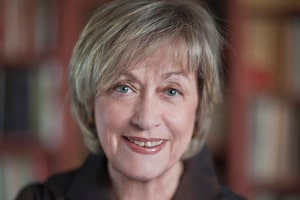Up until now, the Idle No More movement hasn't sparked much attention in Quebec, apart from a small demonstration in Montreal of young Indians who chose their own emblem – a red feather that echoed the red square of last spring's student revolt. According to a recent CROP survey, more than three-quarters of Quebeckers hadn't even heard of the movement.
Quebec's aboriginal chiefs, far from joining the angry chorus of their Ontario colleagues, have sided with Shawn Atleo, the pragmatic leader of the Assembly of First Nations. Matthew Coon Come, the well-known Cree leader, and Ghislain Picard, the head of the province's first nations assembly, welcomed the opportunity to reopen "a meaningful political process" with Prime Minister Stephen Harper.
Although the 1990 Oka crisis near Montreal was one of the worst standoffs between aboriginal militants and the authorities in Canada's recent history, Quebec has enjoyed, by and large, a more serene relationship with its aboriginal population than many other provinces. Contrary to the newer Western provinces, where many land claims haven't been settled, Quebec has had more than 400 years to work out relatively peaceful arrangements with its native minority.
Throughout history, there have been very few armed confrontations and a great deal of intermarriage, so that many families, especially in northern areas like the Saguenay, have Indian blood in their heritage, while most Quebec aboriginals, especially those who live off-reserve, are physically indistinguishable from the majority population because they all have "white" ancestors.
The Indian population in Quebec is very small: 1 per cent of the population, just over 80,000 people, of whom less than 20 per cent live on reserves. According to Réjean Morissette, a former civil servant who took part in the negotiations of the Quebec government with the James Bay Cree and worked for 10 years as a liaison officer between the government and the native reserves, Quebec's aboriginal people should be seen as "co-founders" rather than victims. In several publications, he debunks the "myth" that Indians were dispossessed of their land.
Apart from about a thousand Mohawks in the lower St. Lawrence Valley, he argues, "none of the 11 nations now recognized by the Quebec government had a significant, continued and organized presence" on Quebec's territory at the time of the first French explorers, in the mid-16th and the early 17th centuries.
Quite a few young Quebec Indians now refuse to play the "victim" card, such as Guillaume Picard, a Huron-Wendat who wrote in a letter to La Presse that Theresa Spence's record as Attawapiskat chief is a "shame," and that young Indians are fed up with their image as "victims of colonialism or post-colonialism" and want to take their destiny into their own hands.
Another reason for the relatively peaceful climate is that most Quebec reserves are economically well-off because they are located very close to cities that offer job and educational opportunities – the Mohawk reserves are near Montreal and the Huron-Wendat First Nation is a suburb of Quebec City.
In the far north of the province, peace was bought at a high price. In 2002, the James Bay Cree signed a celebrated treaty with the Parti Québécois government. In exchange for their land rights, they ended up with billions of dollars and a huge stake in the future development of Northern Quebec. Sadly, though, the Cree, while collectively rich, suffer from the woes of all isolated reserves, with many young people dropping out of school to face a future of unemployment.
 Lysiane Gagnon
Lysiane Gagnon